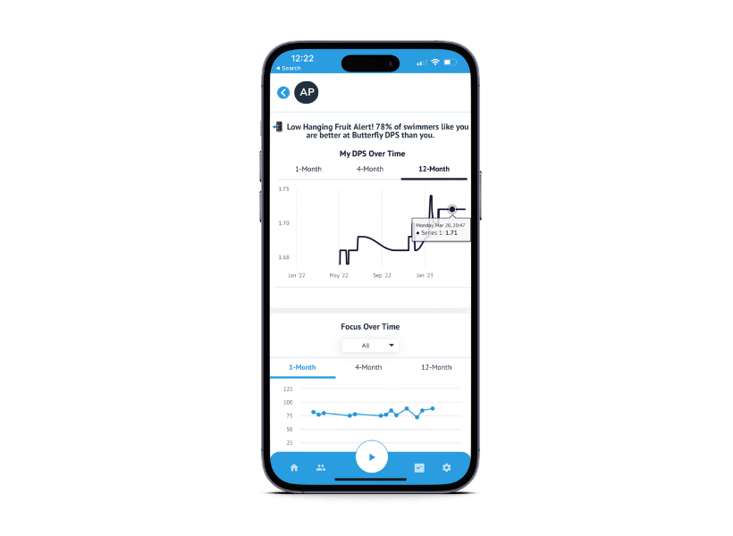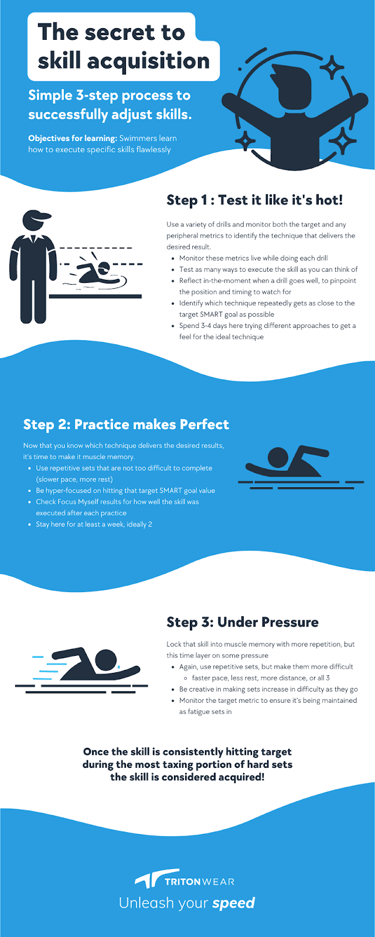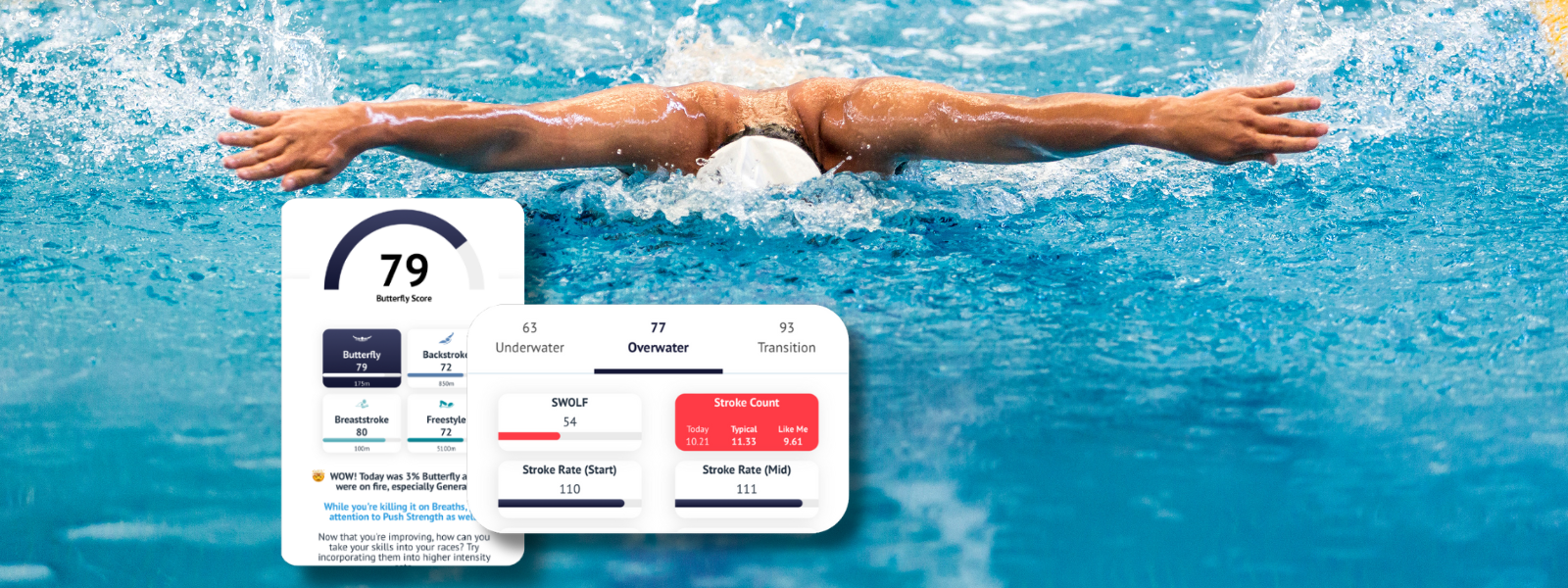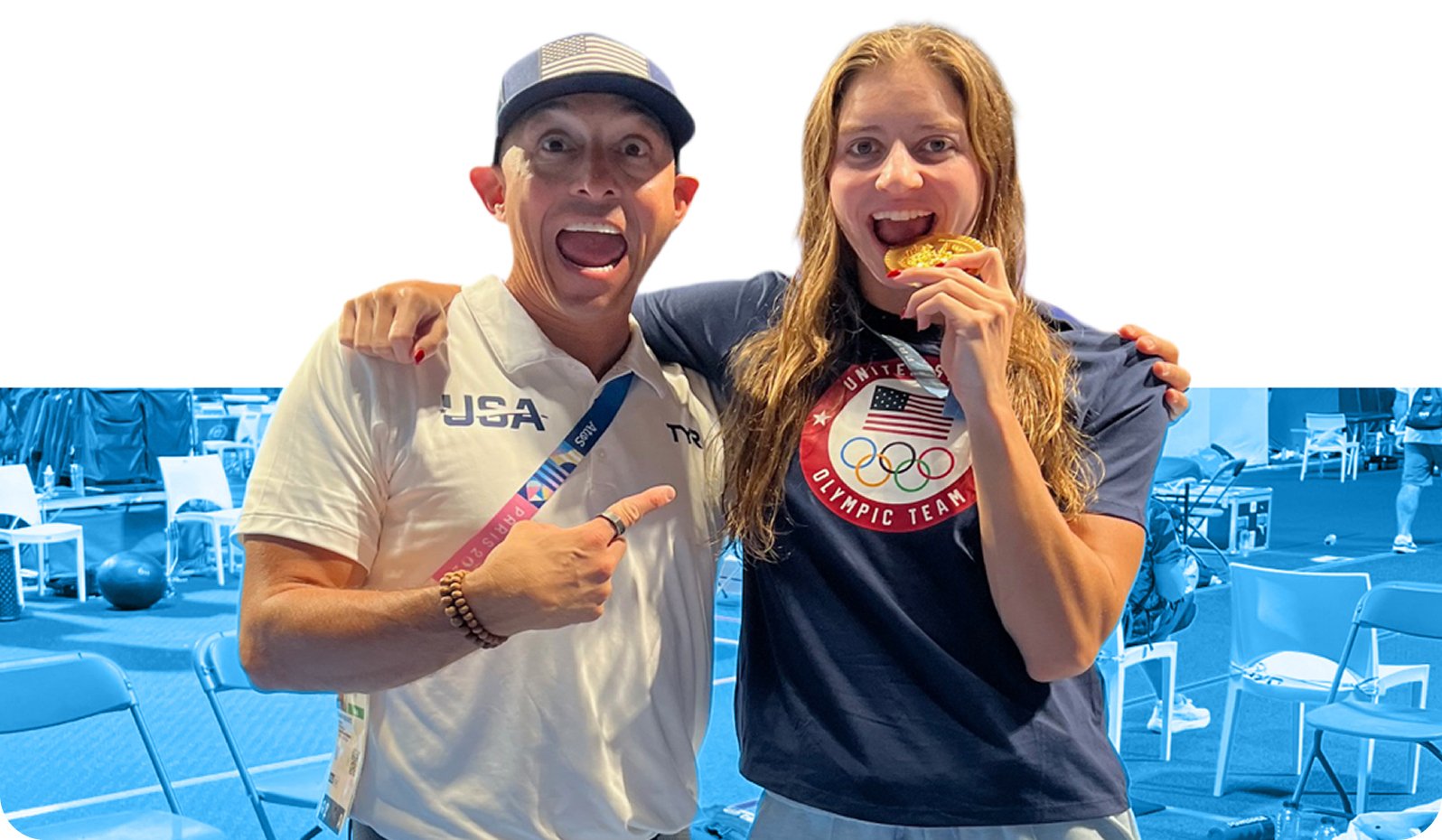One of the biggest challenges swimmers face when improving their swimming technique is breaking old habits. Most swimmers develop muscle memory for a specific technique over time, which can be hard to break.
As a swimmer, you may be aware of flaws in your strokes. Implementing corrections through practice, however, can take time and effort.
Persistence is key. Additionally, you may struggle to identify exactly what you need to improve upon or how to correct your technique. Furthermore, the lack of day-to-day insights into your technique progress may leave you feeling discouraged and unengaged.
It will take patience and perseverance to overcome these challenges. However, the effort will be worth it. You will see an improvement in your speed, stamina, and overall swimming efficiency.
This article will help you improve your swimming technique. It will explain the strategies to set SMART goals, incorporate data feedback, and master skill acquisition.

Setting SMART goals
Setting SMART goals is a crucial component of improving your swimming technique. Set specific, measurable, attainable, relevant, and time-bound goals. This can help you stay on track and motivated to reach your desired swimming efficiency.
How to do it right:
- Identify areas of your technique that need improvement. These could include strokes, breathing, turns, and underwaters. Think of other areas that you feel require more work.
- Set measurable goals for each area. Having specific targets and metrics you can track will help you stay motivated. You will also be able to see your progress over time.
Improvement can be targeted in various ways. For instance, you could increase your Stroke Rate in freestyle swimming by a certain percentage. Or reduce the number of breaths you take during a lap. - Set realistic goals. Challenge yourself, but don't make the goals too hard. Otherwise, you may become frustrated and disappointed. Be honest about your current abilities and set challenging but achievable goals.
- Set a realistic timeline. Improving your technique won't happen overnight, so setting a timeline that reflects that is essential.
The amount of time required to master a skill varies. It could be days, weeks, or even months. before you notice any significant improvements. - Develop a plan. Once you've set your goals and timeline, developing a plan is important to help you achieve them.
Try different drills and exercises during practice. Incorporate strength training and flexibility. Utilize other strategies like video and swimming analytics to improve technique.
Using data feedback
Use data to set your SMART goals strategy in motion and implement data insights to track and evaluate your progress. Don't worry if this seems challenging. We will help you set SMART goals using data every step of the way.
1. How to determine what to improve on first?
TritonWear Focus shows you an in-depth analysis of all four strokes and their respective phases. Determining your strengths and weakness can be done quickly by looking at your stroke and phase scores. Focus on the areas you excel in and shift your attention to the ones you are not.

Think of the phases as the different parts of your swimming, like your turns, underwater and overwater swimming. You can look at your "my average" or "like me" comparisons to evaluate your performance. These comparisons show you a breakdown of your skills under each phase.
In detail, "my average" shows you how you're doing in your technical skills from day to day. The "like me" insights allow you to compare your technique to other swimmers. These are swimmers of the same speed, height, and gender as you.
Are you wondering what part of your technique is holding you back? Choose a stroke you want to improve on and use the "like me" comparisons to determine what skills to target first. You'll want to check your scores for each phase: overwater, underwater and transitions.
The phase with the lowest score will show you the part of swimming that will yield the most significant improvements. Tiles coloured in red offer an at-a-glance view of the skills you'll need to focus on first.
.png?width=500&height=320&name=Blog-Cover-Images-2022-2023-(21).png)
2. How to set measurable goals?
A closer look at each skill will show you three values, "Typical," Like Me," and "Today." Use these to benchmark your performance and set your goals.
- Typical values are your benchmarks, how you usually execute this skill.
- Like me represents how other swimmers in your cohort execute these skills.
- Lastly, your today values display your skill execution in this specific workout.
Let's use a real-life example to make things more palpable. We used a male distance swimmer in his late teens for this exercise. The goal of this swimmer is to improve his Distance Per Stroke. This is the distance covered with each stroke he takes in Butterfly.
To do this, he first established his baseline, which involved tracking his workouts to determine his average distance per cycle travelled.

- His benchmark is 1.71 m/cycle (based on his typical values)
- His target is 1.98 m/cycle (based on the like me values)
→The goal is to increase his DPS by 0.22 m/cycle.
The swimmer can use TritonWear's real-time data for visual feedback during practice. Or, he can look at the "Today" values in the Focus dashboard after training is complete. By monitoring his skill execution during each workout, the swimmer can adjust his performance to hit his Distance Per Stroke target every time.
3. How to make your goals attainable?
Making your goals attainable involves setting realistic and achievable targets for yourself. For example, a 0.22 m/cycle increase in DPS for Butterfly will take time. It will take time and much work to get there. To stay motivated, it's best to set smaller, short-term goals contributing to your overall long-term plan.
The swimmer could gradually increase his DPS by 0.05 m/cycle each month. For example, 0.05 m/cycle in the first month, then 0.05 m/cycle for the next month and so on.
You can easily stay motivated and monitor your progress by dividing your big goal into small, achievable ones. As you keep track of your progress, you can hold yourself responsible for your performance. Building your confidence is possible if you set feasible objectives and monitor improvements. This way, you can gradually work towards improving your times long term.

Mastering skill acquisition
Skill acquisition refers to learning and developing the various techniques and skills involved in swimming effectively. Scientists and psychologists have studied and explored the skill acquisition process for many decades.
Paul Fitts and Michael Posner were two American psychologists. They developed the model of motor learning in the late 1960s and early 1970s. They proposed a three-stage continuum of practice model that identifies three distinct stages of skill acquisition. Their research and theories have since become influential in psychology and motor learning.
Here are the three stages of skill acquisition:
-
- Cognitive Phase: In the first phase, you learn and introduce the movement slowly in your swimming. To put this into context, let's say you're trying to lengthen your strokes to improve your Freestyle. You focus on improving your body position and extending your reach to increase the distance travelled with each stroke.
In this phase, the goal is to understand what increasing DPS in your freestyle stroke feels like. During this stage, making several mistakes and lacking consistency are common. - Associative Phase: The second stage is all about practice. You understand the movement and try to do it correctly every time, but it still requires attention, focus, and repetition.
At this stage, you're linking particular cues to holding more water and lengthening your strokes. Since you have the basics of this technique down, you're also experiencing fewer mistakes and achieving better consistency. Your goal here is to refine your skills. - Autonomous Phase: In this final phase, you have perfected the movement and can perform it almost without conscious effort. Your focus now shifts to maintaining technique during faster swims.
To master this, it's essential to focus on holding technique consistently and progressively while increasing the difficulty of the swim.
To swim faster, use the infographic below as a step-by-step guide to executing your technical skills flawlessly.
- Cognitive Phase: In the first phase, you learn and introduce the movement slowly in your swimming. To put this into context, let's say you're trying to lengthen your strokes to improve your Freestyle. You focus on improving your body position and extending your reach to increase the distance travelled with each stroke.

The process of acquiring swimming skills involves learning the basics. Continuous practice and improvement are key. Repetition and consistency are necessary for perfecting these movements.
It is also essential to keep in mind that each swimmer develops skills differently. This is because everyone has a distinctive mix of physical attributes, cognitive abilities, and learning styles. Some people may need more practice and guidance to become proficient in a specific technique. Others may find that they have a natural talent for certain skills.
Key Takeaway
In summary, performance data can be incredibly valuable in helping you improve your strokes. Utilizing the visual feedback they offer will help you refine your skills. You can break old habits and create a more efficient swimming technique. This will empower you to stay on track and unleash your speed.





.png)
.png)